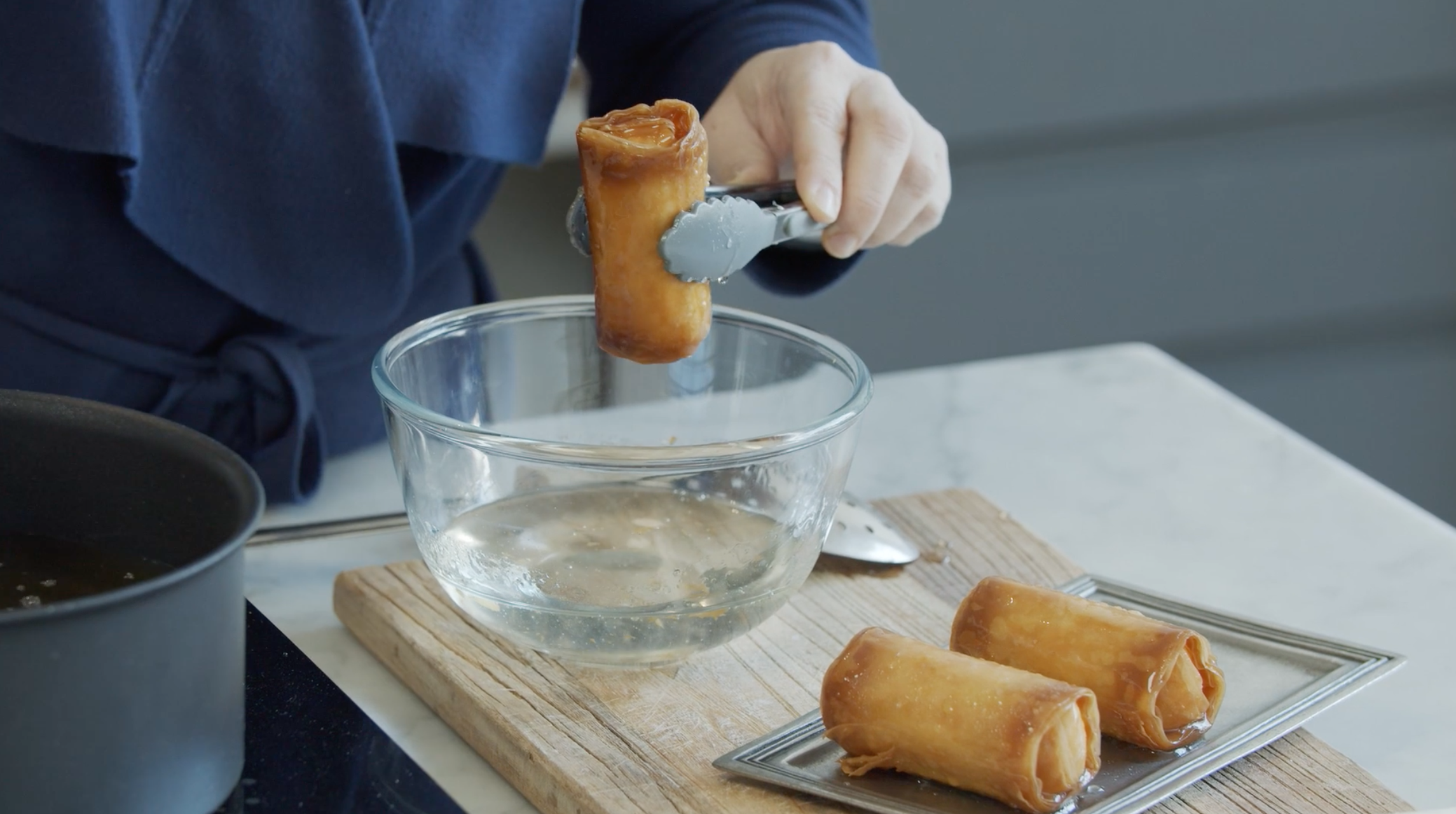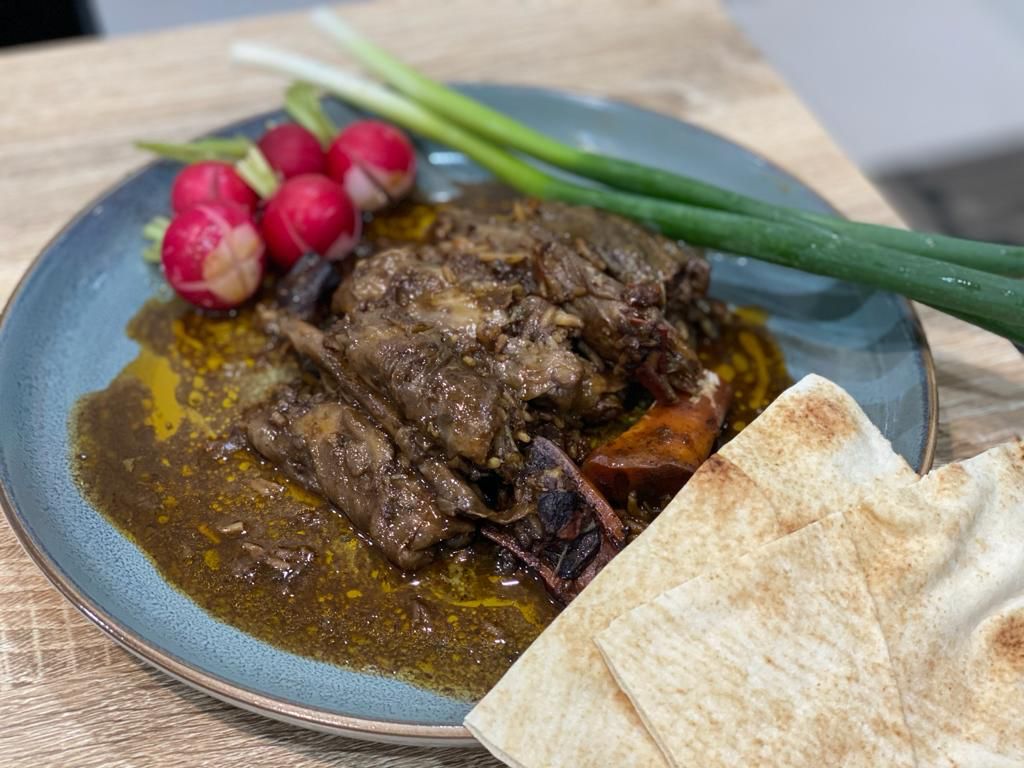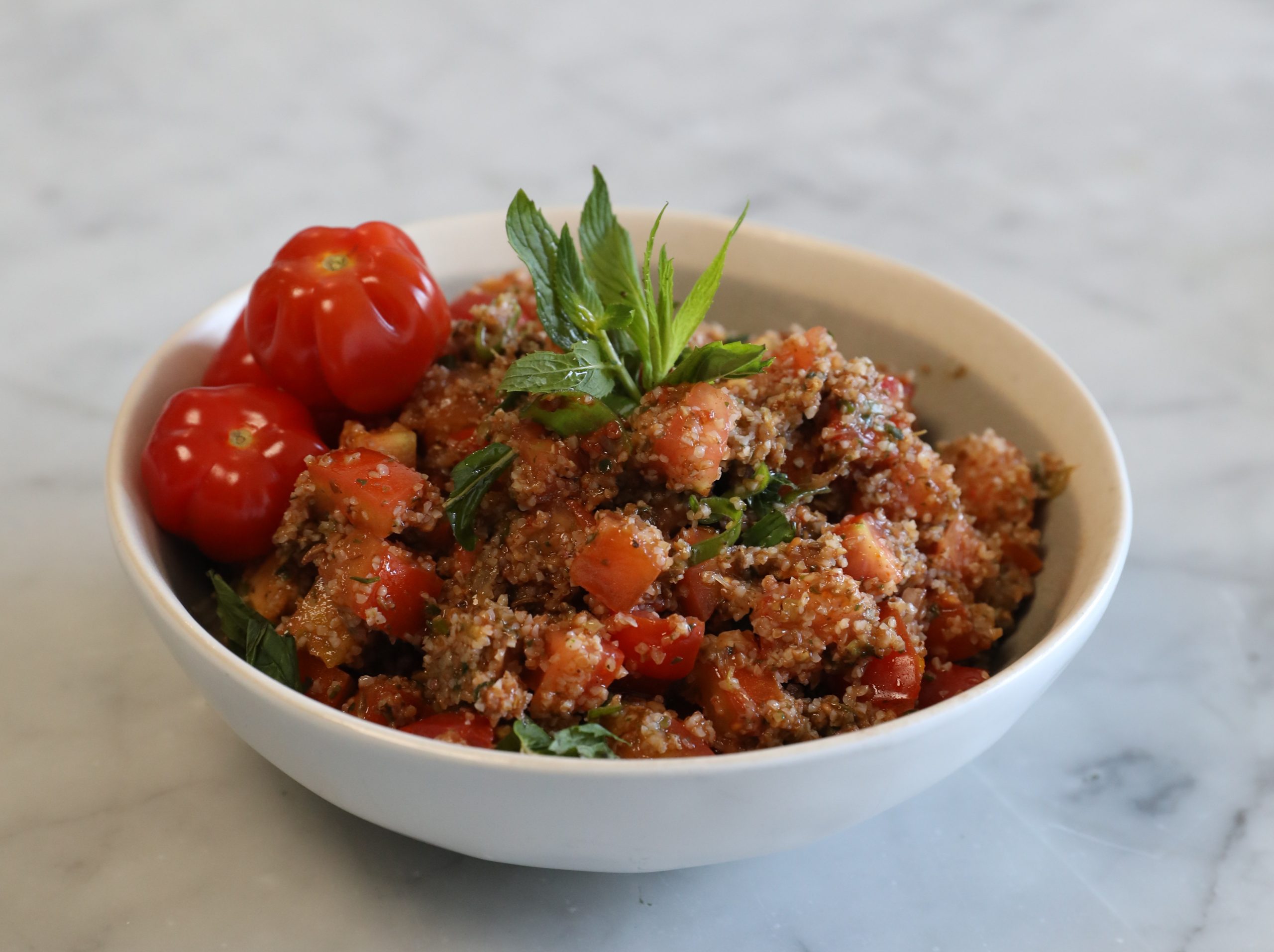Hoda’s Znoud El Sitt
 Lebanon
Lebanon 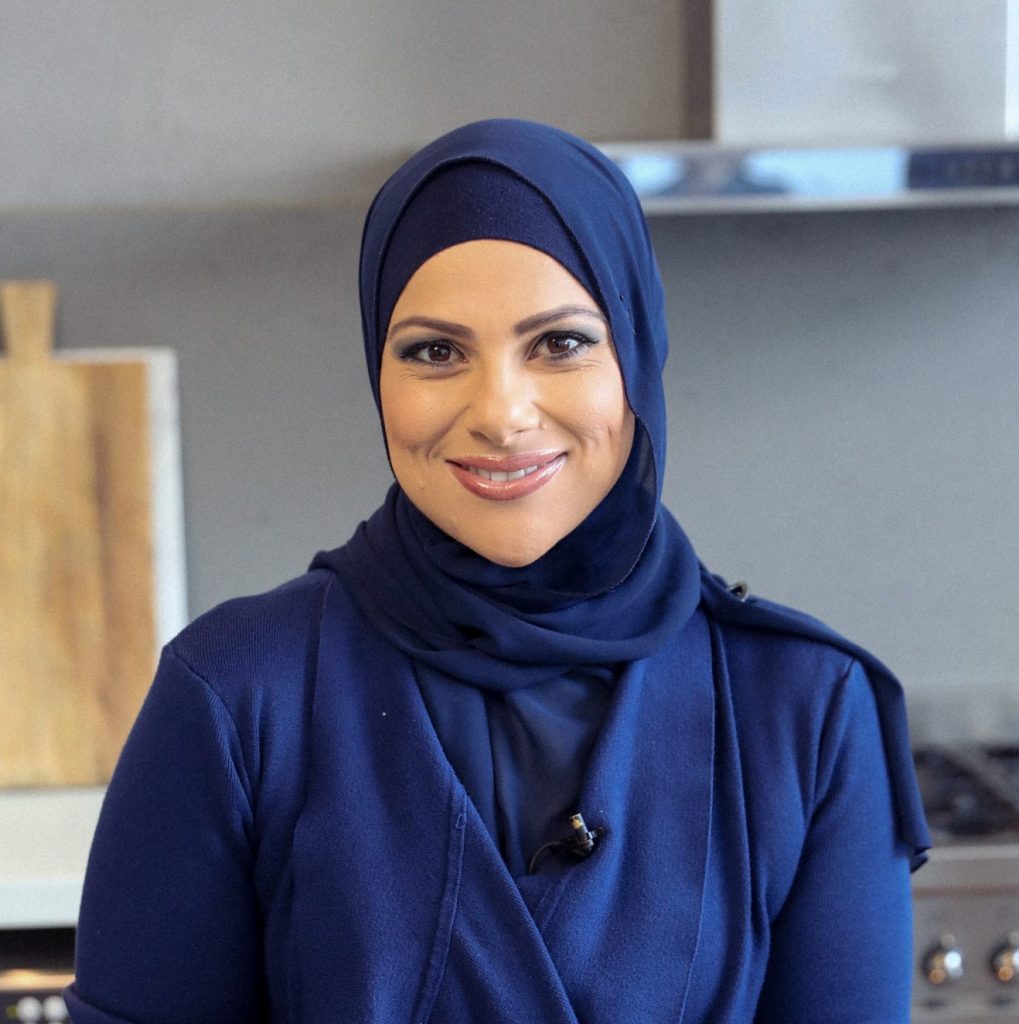
People always ask me: how did you learn to cook so well? The answer is being one of four children. I was the second eldest with a typical migrant background story – hard working parents who couldn’t always be home. So I stepped up to become the resourceful family ‘feeder’ which taught me how to cook with whatever I had around.
Food means family to me and both elements are so intrinsically connected to each other in all I do.
My parents migrated to Australia from Lebanon soon after they were married. Mum was 17 and Dad 23. In some ways they are polar opposites. Mum was one of 14 but her family were wealthy and well-educated. Dad’s family lived in the village and as the oldest of 11, he had to leave school in Year 9 to help support the family financially. When they got here, Mum went to TAFE to complete her HSC and then to Uni to do a computer science degree while Dad worked as a milkman and a taxi driver before starting his own picture framing company. It was a struggle to make ends meet but he wanted to support Mum to finish her education and they have always put a lot of emphasis on all four of us getting Uni degrees.
While we were growing up we all went to Lebanon once a year for our long December-January summer holidays so that we could get to know our cousins and extended family and experience how life was in Lebanon. Like many migrants, my parents were often surprised at how much things had moved on since they had left. My mum’s mum died before any of us were born but I have been lucky to know my dad’s mum, both my grandfathers and my great grandfather who lived to the incredible age of 108. It was such a privilege knowing him.
The family was from the south of Lebanon, close to the border with Israel. This part of Lebanon was occupied by Israel amid the hostilities of the wider Lebanese Civil War and it remained occupied until 2000. Roughly 10% of Lebanon, this area became known as the South Lebanon Security Belt.
My grandparents and extended family lived in underground dwellings for many years. The above ground houses were abandoned, and the fear of random bombings and shootings was real. People felt their every move was being watched and would point out the observational towers where the Israeli soldiers were. My grandparents moved to Beirut but kept their property in the south and my parents have built a house there recently. They would never move back but the emotional ties are strong.
Both my parents have a really strong work ethic and worked hard in Sydney to build a life and ensure we all got a good education and they ended up owning a picture framing company which is really well-known in the community. (It’s the one by Nut Roasters on Chapel Street in Roselands, south-west Sydney.)
Hard work and long hours did mean they couldn’t always be home and that probably contributed to the fact they were eclectic grocery shoppers and why I learned to get creative in the kitchen from a young age. I always enjoyed the challenge and it’s still how I cook now – with a fusion of flavours from Australia, the Middle East, and other culinary traditions too.
A great example of this is my Znoud – a popular Lebanese pastry of crispy filo pastry stuffed with ashta, which is a kind of Arabic clotted cream a bit like ricotta, mascarpone cheese or English clotted cream, sweetened with a little bit of sugar and rose and orange blossom water and drenched in rose water syrup. Bizarrely in English, Znoud El Sitt translates to “the upper arms of a woman”!
Znoud is a very popular choice of dessert to bring to iftars during Ramadan when you are invited to someone’s home to break the fast in the evening and it’s something I cook over and over throughout the month as a post-iftar treat with a cup of coffee or tea. But it’s usually not your standard Znoud. I experiment.
These days I make versions of Znoud inspired by everything from French eclairs to American apple pies; but the old school, traditional version of the dessert will always have a special place in my heart. It is flavoured with orange blossom and rose water and garnished with pistachio. That combination has stood the test of time and the filling, ashta (Arabic clotted cream), will always be a source of nostalgia, no matter how many new versions I dream up.
My memories of the dessert go all the way back to childhood. My parents would buy searing hot Znoud from a local sweets / pastry shop. They loved to eat it that way: straight from the baker’s fryer.
I can also credit Znoud with another chapter in my life. It is the dish I made when auditioning for MasterChef in 2018 and I made it onto the show – so it has allowed me to progress on both TV and in recipe development.
Remembering my parents buying just-fried Znoud from a local sweets shop and eating it hot and fresh, I decided what I wanted to do was to create it for the home-cook so that people at home can enjoy it as hot and fresh as my parents and I have always done.
I sell frozen packs online at www.hodahannaway.com.au – for pick up and soon to be delivery in the Sydney area – but I’m sharing the recipe here with you now so that wherever you are you can give it a go too. Have a look at the demonstration video for how to do it – and have fun! They really are something special and will have you hooked too!
They can be also be eaten at room temperature or cold so are also a great make-ahead dessert.
Hoda Hannaway
May 2021
Share this story
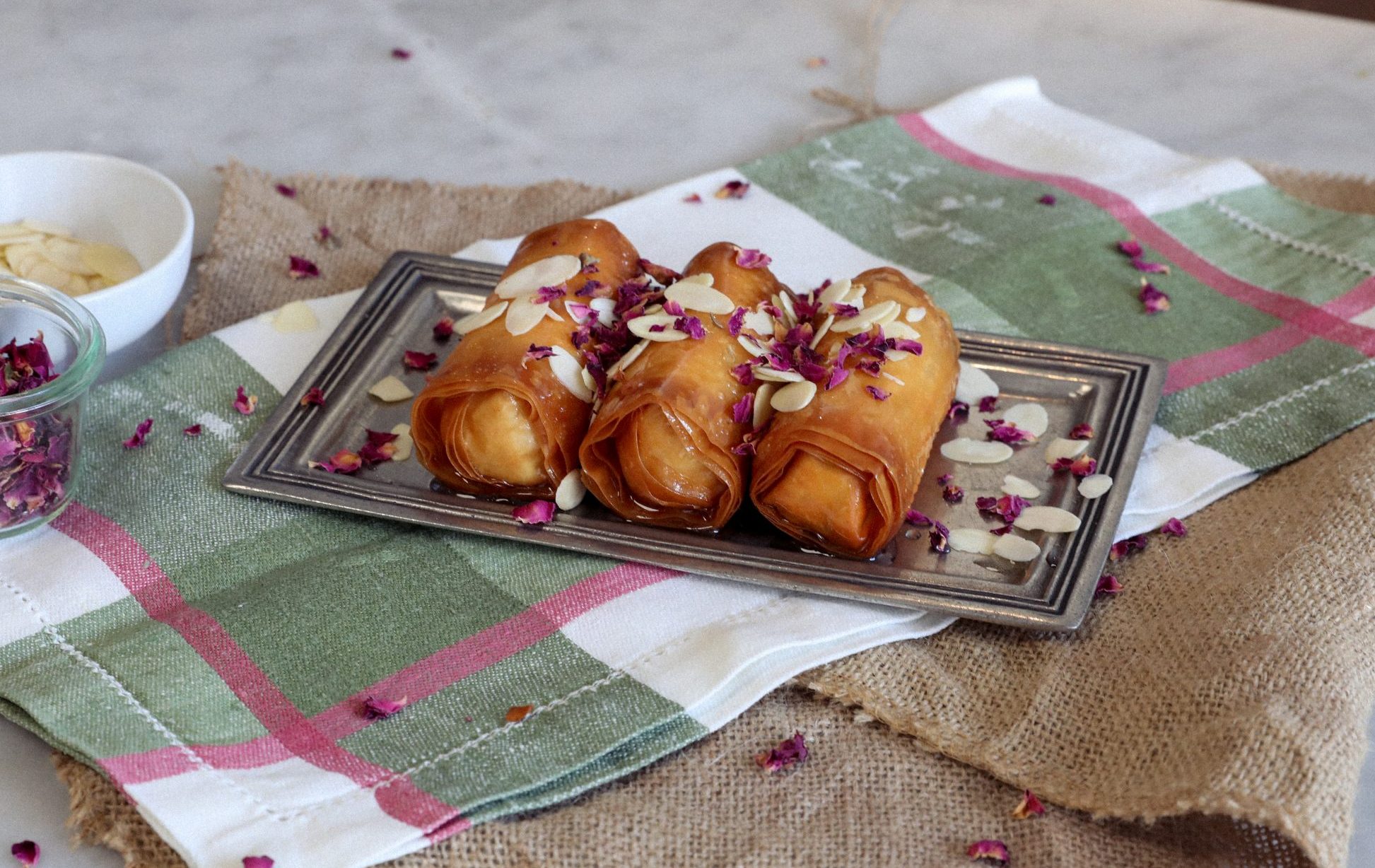
For the Rose Water and Orange Blossom Syrup, place sugar, lemon juice and water in a medium saucepan over high heat and stir until sugar has dissolved then continue to cook until the syrup comes to the boil.
Reduce heat to medium-low and allow the syrup to simmer for 6-7 minutes.
Remove from heat and stir in the rose water and orange blossom water, then set aside to cool.
For the ‘Ricotta’, place milk, vinegar, sugar, rose water and orange blossom water in a small saucepan over high heat and stir until sugar has dissolved. Continue to cook until curds begin to form, about 3 minutes. Sit a fine sieve over a bowl. Pour the curd into the sieve and allow the mixture to strain and cool down in the fridge.
For the Custard, mix the cornflour and water together in a small bowl until well combined. Place the milk, sugar, rose and orange blossom waters in a small saucepan, mixing until sugar has dissolved. Bring to a simmer, then add the cornflour water mixture and whisk vigorously until mixture thickens and coats the back of a spoon. Remove from the heat, transfer to a clean bowl and place in the freezer to cool down quickly.
Once the ricotta and cornflour custard have cooled, mix together in a bowl until well combined.
To Assemble, cut Fillo sheets into 6 cm strips, cover with a clean tea towel then set aside.
To cook the Znoud El Sitt, place canola oil into a wok and heat to 180C over a medium-high heat.
To assemble, lay 4 strips of phyllo horizontally in front of you on a clean work surface and place another strip across it vertically, creating a cross shape.
Place a tablespoon of the ricotta and custard mixture in the centre of the fillo, where the two strips cross over. Fold the side strips in to cover the filling and then roll the parcel to form a cigar shape, sealing the edges with a little water.
Working in batches, drop cigars into the hot oil and fry until golden brown, about 2-3 minutes. Drain pastries on a paper towel then immediately dunk into sugar syrup for 10 seconds, then place onto a paper-lined tray.
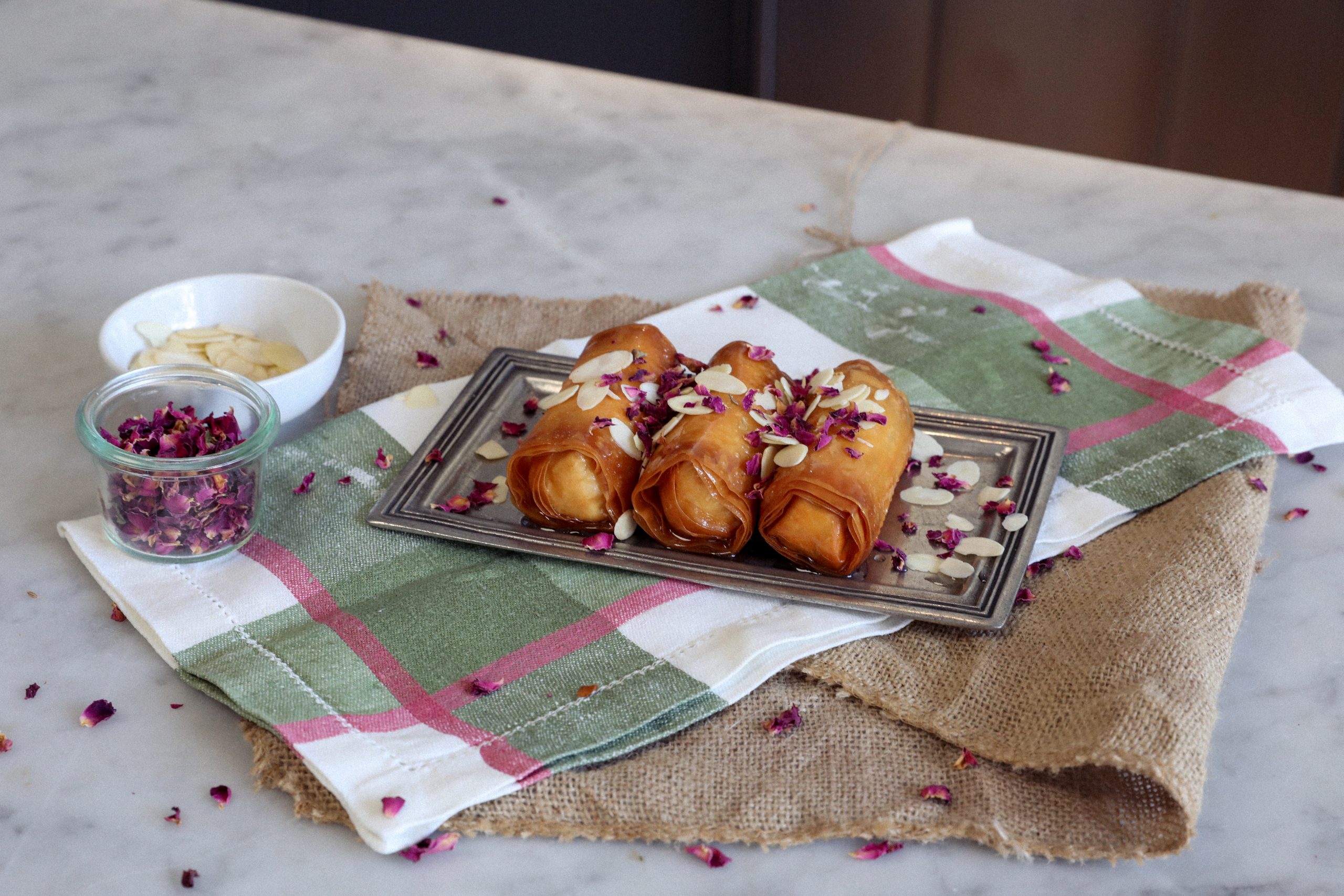 To serve, sprinkle edible rose petals and ground pistachio across pastries. Serve with a little extra syrup on the side.
To serve, sprinkle edible rose petals and ground pistachio across pastries. Serve with a little extra syrup on the side.
